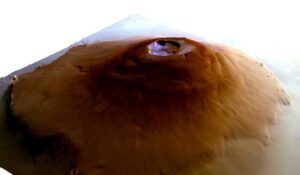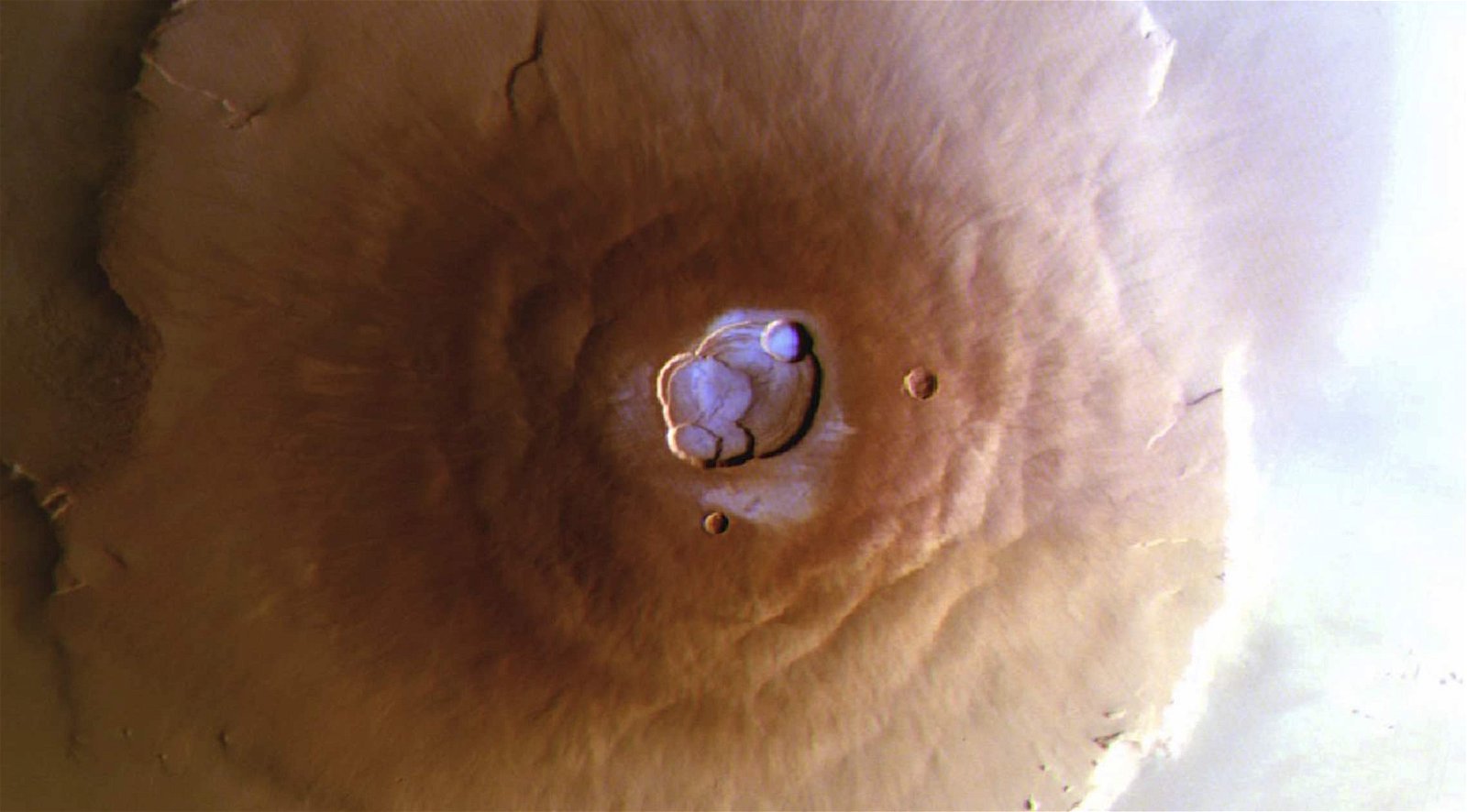A Brown University astrobiologist and an international team of planetary scientists say they have found an ‘improbable’ series of patches of water frost sitting atop a number of massive Martian volcanoes. According to the researchers behind the discovery, this finding represents the first time that water frost of any kind has been spotted near the planet’s equator. It would also be a finding that goes against current models describing the red planet’s atmosphere and water cycle.
“We thought it was improbable for frost to form around Mars’ equator, as the mix of sunshine and thin atmosphere keeps temperatures during the day relatively high at both the surface and mountaintop — unlike what we see on Earth, where you might expect to see frosty peaks,” explained Adomas Valantinas, a postdoctoral fellow and astrobiologist at Brown University and the team’s lead researcher.


According to the team’s analysis, the layer of water frost appears each morning until the rising sun heats up the planet’s surface and causes it to evaporate back into the atmosphere. The process normally only takes a few hours, as the frost only appears as a very thin layer, likely only one-hundredth of a millimeter thick, before disappearing. For comparison, this is about the thickness of a human hair.
Still, the researchers say that the actual covering of frost is incredibly vast. In fact, the team calculates that as much as 150,000 tons of water are evaporated and then redeposited on the Martian surface every single day. “That’s roughly the equivalent of 60 Olympic-sized swimming pools,” they explain.
Discovery Atop Martian VOlcanoes is the Culmination of Six Year Long Project
In the team’s published study, which appears in the journal Nature Geoscience, Valantis notes how he first began searching for evidence of frost atop Martian volcanoes back in 2018 when he was still a Ph.D. student at the University of Bern. That effort involved combing through thousands of high-resolution photos of Mars captured by the Color and Stereo Surface Imaging System (CaSSIS) instrument onboard the European Space Agency’s Trace Gas Orbiter.
When an image revealed a spectral signature consistent with water frost, Valantis says he placed it into a larger series of images sorted by time, location, and season. As more images joined the series, Valantis found that they began to reveal a daily cycle, where this ultra-thin layer of water frost was deposited overnight and then evaporated back into the atmosphere by the rising sun each morning.
“What we’re seeing may be a remnant of an ancient climate cycle on modern Mars,” Valantis posited, “where you had precipitation and maybe even snowfall on these volcanoes in the past.”
To ensure that what they were seeing was real since it was so unexpected, Valantis and his colleagues verified the images using separate observations made by the High-Resolution Stereo Camera onboard the ESA’s Mars Express orbiter and the Nadir and Occultation for Mars Discovery spectrometer onboard the Trace Gas Orbiter. All told, the researchers say over 30,000 images were selected and verified during the six-year project.
In the study’s conclusion, the team says they believe the water frost, which sits inside the caldera of several Martian volcanoes within the Tharsis range, is created and deposited due to microclimates that form within these massive structures. These microclimates exist due to the enormous height of the Tharis volcanoes. According to the researchers, the mountainous volcanoes of Tharsis range between one and two times the size of Mount Everest on Earth. The largest, Olympus Mons, is as wide as France.
Astrobiology and the Search for Marian Life
Since his transition from Bern University to Brown University, Valantis says he is going to continue exploring “Martian mysteries.” This includes transitioning to a full-time astrobiology role, where he will apply his analysis skills to help characterize the ancient environments around Martian vents, where microbial life may have once thrived.
According to the press release announcing the discovery, the researchers believe that modeling how the frosts are forming atop these Martian volcanoes “could allow scientists to reveal more of Mars’ remaining secrets, including understanding where water exists and how it moves, as well as understanding the planet’s complex atmospheric dynamics, which is essential for future exploration and the search for possible signs of life.”
If everything goes well, Valantis said he hopes his work, including his discovery of water frost atop Martian volcanoes, can help lead to the detection and collection of high-value Martian soil samples that are brought back to Earth for study. In fact, he says that searching for life that evolved outside of Earth has always captured his imagination, so he is not going to miss out on the opportunity to help science try to make another major discovery.
“This notion of a second genesis, of life beyond Earth, has always fascinated me,” Valantinas said.
Christopher Plain is a Science Fiction and Fantasy novelist and Head Science Writer at The Debrief. Follow and connect with him on X, learn about his books at plainfiction.com, or email him directly at christopher@thedebrief.org.

